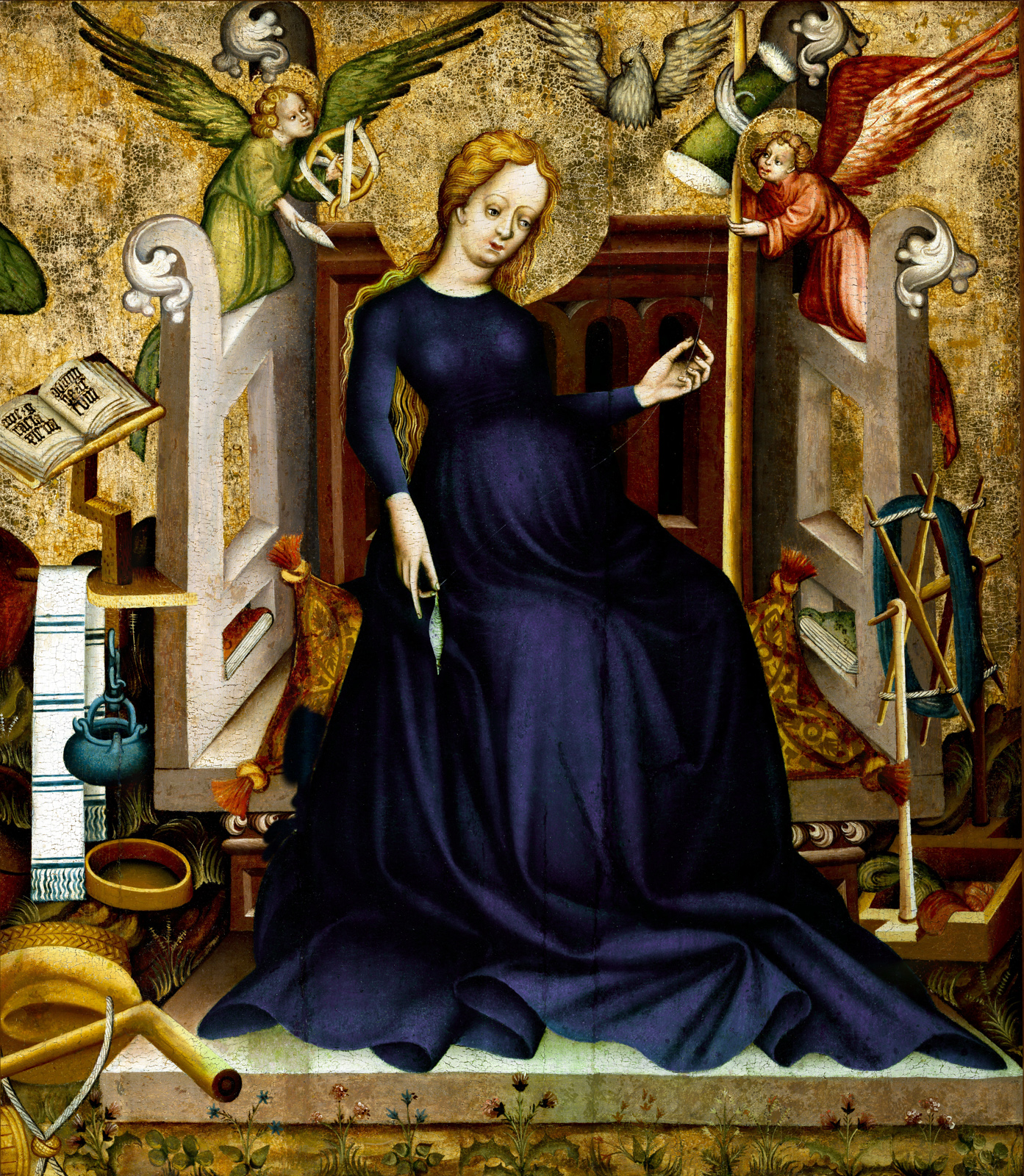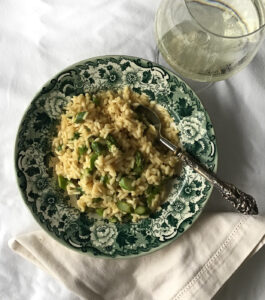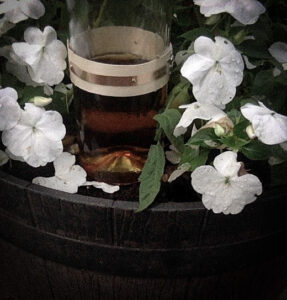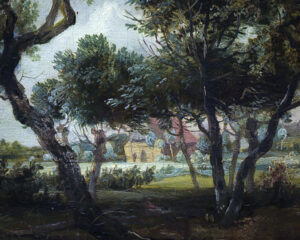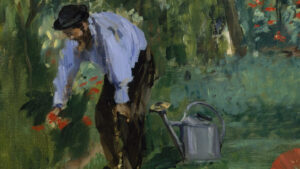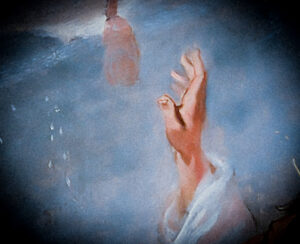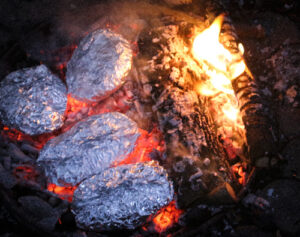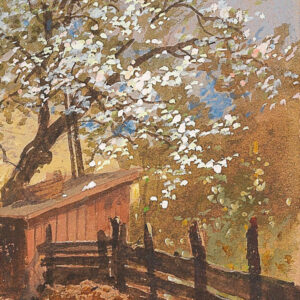From Darkness to Light
Reclaiming Advent

Mrs. Tsh Oxenreider
I am a latecomer to the Advent tradition, seeing as the season is at least fifteen hundred years old. My childhood home overflowed with beloved lowercase “t” Christmas traditions — Santa left coal-ridden bootprints on our carpet and occasionally tore his red suit on our fireplace — but none of them hinted at an ancient, cyclical calendar that expanded beyond my mid-80s American sensibilities. We baked cookies, watched our never-miss holiday movies, and attended the Christmas Eve service at our local non-denominational church. Christmas was a bang-up celebration of family gatherings and seasonal warmth. We admitted that “Jesus was the reason for the season,” but we didn’t recognize any idea of “Advent” in our home. Advent calendars were those cardboard punch-out boxes from the grocery store aisles equipped with twenty-four pieces of mediocre chocolate, a gift to consume daily starting December 1st.
I don’t blame my parents for this, because they weren’t raised in any sort of tradition that recognized Advent, either. Strangely enough, I have Pinterest to thank for my introduction to Advent as an actual season. My children were young, and I wanted to prolong a joy-filled Christmas season as best I could without succumbing to ill-fated parental burnout by December 19th. My idea was to create a homemade calendar on the wall, festooned with twenty-four flippable days. Each morning we’d turn over the date and discover our day’s activity: make paper snowflakes, build a snowman in the backyard, decorate gingerbread men, or watch A Charlie Brown Christmas. This way, the calendar dictated our day’s agenda; it wasn’t Mom who declared we were only doing one holiday-themed activity per day. The internet was rife with these sorts of ideas, so I chose a few tutorials and created our own amalgam of the best concepts.
Unsurprisingly, as you may have already guessed if you have any experience at all with small children, I still inescapably burned out. Every year, like clockwork, along would come 8 a.m. on December 12th or so and I’d find myself dreading what I decided last month that we’d do that day. Surely the season was about more than managing the jubilant expectations of the young? I knew this couldn’t be what parents had always done over the many centuries since we collectively decided to mark a day to celebrate Christ’s birth.
I knew this couldn’t be what parents had always done over the many centuries since we collectively decided to mark a day to celebrate Christ’s birth.
Our new Advent calendar was a hit with the children because each day would reveal something fun to do, but I wanted more spiritual depth, even though they were young. We were a Christian family and wanted to teach our children the faith, so we soon added the tradition of a Jesse Tree, thanks again to the internet. In this enterprise, children hang one ornament per day on a tree (separate from the family’s main Christmas tree), each ornament representing a different point in biblical history, starting with creation and culminating on Christmas Day with the birth of Christ. 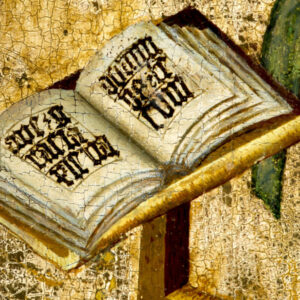 Our kids made homemade Shrinky-Dink ornaments. And we’d ostensibly read a passage from the Bible every evening and hang the day’s ornament (usually with a brief scuffle over whose turn it was to do the hanging).
Our kids made homemade Shrinky-Dink ornaments. And we’d ostensibly read a passage from the Bible every evening and hang the day’s ornament (usually with a brief scuffle over whose turn it was to do the hanging).
This new ritual dovetailed somewhat smoothly into our continuing Advent countdown calendar practice — for the couple of weeks of the month. But soon there would be an unavoidable company Christmas party one evening, a busy day culminating with a choir concert, or some other typical reason for a late bedtime, so we’d skip a day’s Jesse Tree reading and double up the next day. This was fine for one day, but when the inescapable busyness of our modern-day December snowballed into four or five days missed in succession, it resulted in an hour-long ceremony of ornaments, Bible reading, frustrated short attention spans of the very young, and inevitable meltdowns from the children (as well as the adults, behind closed doors after storytime and goodnight kisses).
This was too much for us. There had to be something stable, something bigger outside ourselves, that invited our family to a full observance of Christmas without relegating us parents to a holiday cruise-director-style role of micromanaging juvenile expectations. I’d wonder: were these expectations even real, or was it my own self-induced pressure that created the illusion of these expectations in the first place?
Concurrently during these years of attempting to spearhead our Jesse Tree and countdown calendar traditions, my husband and I were also dipping our toes in the waters of an older approach to religious worship. We both found our modern, Americanized religious affections wearying and bereft of substratum, a free-falling, choose-your-own-adventure style of reverence to the timeless God of the universe. We had spent our early marriage years outside our home country, and had discovered in these unfamiliar cultures expressions of faith that were much, much older than both ourselves and the twenty-first-century zeitgeist in which we lived. It had scratched an itch we didn’t know we had, and it had left us itchy ever since, even back in (especially back in?) our homeland.
We both found our modern, Americanized religious affections wearying and bereft of substratum, a free-falling, choose-your-own-adventure style of reverence to the timeless God of the universe.
My desire for a more meaningful holiday season led me on a journey of reading and researching, which ultimately led me to the actual, historic season of Advent, and with it a discovery that it’s an entirely separate season altogether from Christmas. Beginning the fourth Sunday from Christmas Day, not necessarily December 1st, the age-old season of Advent acknowledges our human need for salvation with an invitation to reflect, repent, and ready ourselves for the arrival of the Christ Child, which we then recognize starting December 25th — the Feast of the Nativity of the Lord — and continue to celebrate for twelve more days (“Aha! so this is what that earworm of a song is about. . .”).
I learned that Advent is a season to prepare to celebrate, not necessarily celebrate just yet. Just as we’d clean the house and polish the fine silverware were royalty to come over for dinner, the four weeks before Christmastide is our time to prepare ourselves for a feast grand enough for a king. 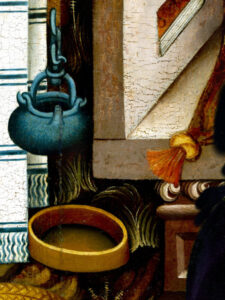 Yes, it means cleaning and decorating the house, menu planning and food preparation, and making plans for guests to come and break bread, but it also means preparing our souls. We clean our hearts through repentance and penance, by reminding ourselves the purpose of the big feast on its way, and in holding back from diving into the treats until the expected company comes.
Yes, it means cleaning and decorating the house, menu planning and food preparation, and making plans for guests to come and break bread, but it also means preparing our souls. We clean our hearts through repentance and penance, by reminding ourselves the purpose of the big feast on its way, and in holding back from diving into the treats until the expected company comes.
I’ll be honest — I was disheartened when I first realized that the real, traditional Advent was a season of preparation and not of celebration. Our family loved Christmas and all the bits and baubles that it entailed! Would partaking in the true season of Advent, then, mean foregoing all that and noshing on a posture of beans-and-rice instead of glittery sugar-cookie glee? Who could possibly ask their small, giddy children to do that?
The balm for this news, of course, was Christmastide: twelve full days of feasting. The traditional Christmas season doesn’t end on December 26th! I had no idea. We could fully partake of — nay, revel in — twelve days of merrymaking through January 5th, when we’d then transition to another old season called Epiphany.
The balm for this news, of course, was Christmastide: twelve full days of feasting. The traditional Christmas season doesn’t end on December 26th!
Advent wasn’t asking us to delay and deny in order to miss out on a party — it was inviting us to make that celebration even sweeter with appropriate and prudent preparation.
It has now been twelve years since the December when I first introduced my young children to our countdown holiday calendar. Much has changed since then. Those kids are all adolescents now and have fully immersed themselves in the bona fide Advent season, thanks to our family’s full recognition of the entire, year-long liturgical calendar (favorite saints’ feast days and all). We no longer hang our countdown calendar, and our homemade Jesse Tree ornaments have stayed in our holiday storage boxes for several years now — not because they weren’t good, but because they served their purpose for a season and we have since moved on to something simpler.
 But even at their age, our teenagers still excitedly anticipate beginning the Advent season by rolling sheets of beeswax for our homemade candles. After lighting the appropriate candles each evening, we read a short passage of Scripture focused on our own inward preparation and collective need for salvation, then end our short living room gathering by listening to an Advent-style hymn and viewing a historic work of art.
But even at their age, our teenagers still excitedly anticipate beginning the Advent season by rolling sheets of beeswax for our homemade candles. After lighting the appropriate candles each evening, we read a short passage of Scripture focused on our own inward preparation and collective need for salvation, then end our short living room gathering by listening to an Advent-style hymn and viewing a historic work of art.
We’re not purists; we still decorate a Christmas tree in early December and return glad tidings of “Merry Christmas!” to those who wish us well during Advent. We attend local holiday events and wave hello to the Santa Claus in the neighborhood parade that floats by our front yard every early December. But there’s now a much-welcomed, settled calm in the mother of those adolescents during the season, a woman who does not feel the frantic need to pursue every form of holiday jollity before the twenty-fifth of the month: The only thing she need pursue is the same peaceful preparation for the coming of the Messiah as was, quite literally, embodied in another mother, long ago. Advent, and the whole liturgical calendar writ large, have become for us a grace-filled, faith-fueled invitation to step in tandem with the seasons of life that millions before us have plodded through as well, when we confess our human, mortal need to separate seasons of fasting from feasting. Advent has become a necessity. Without it, Christmas loses its meaning.
The more post-modern our world becomes, the more indebted I feel to the ancient liturgical calendar and its timeless gifts of patience, joy, and hope. We all need frequent, annual, rhythmic reminders that this here-and-now life is not all there is. As many of us rise up to our vocations of rearing the next generation, the liturgical calendar calls us to participate in a timeless human enterprise, and in doing so we depend on the nonpareiled grace of the Maker of it all.
Happy Advent!

